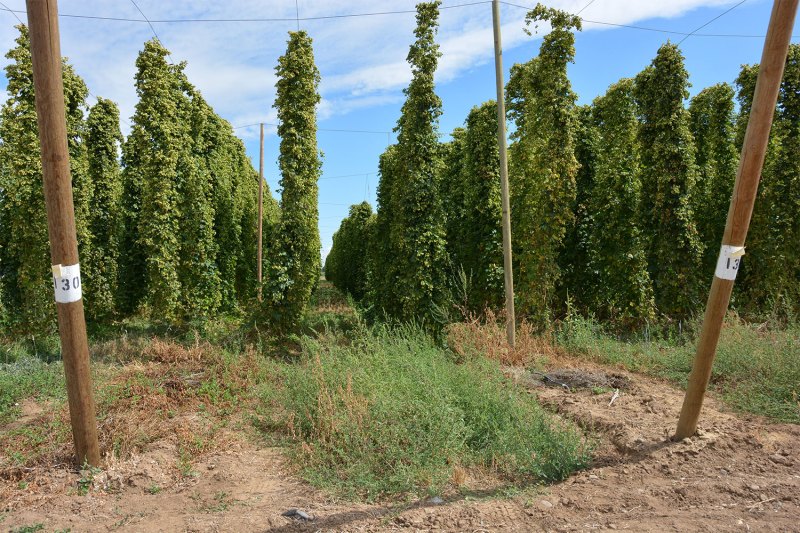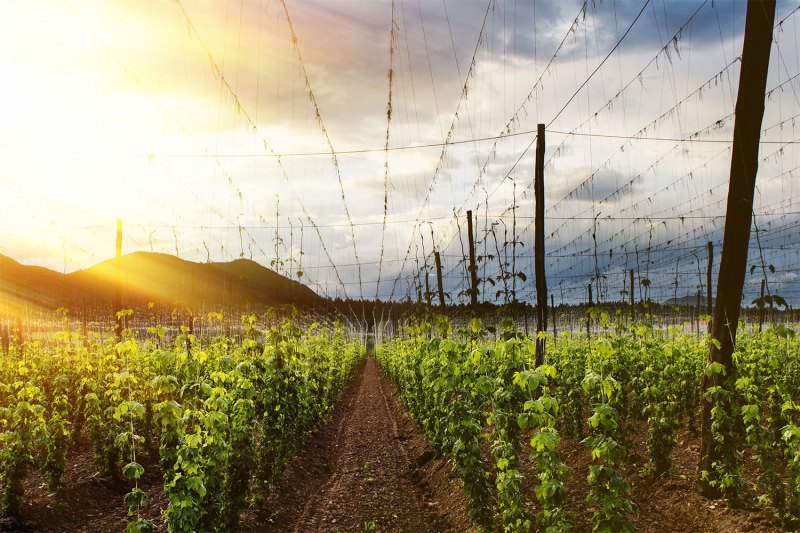On a map, it doesn’t look like much more than a straight north-south line just southwest of Wapato, Washington. Yet, the road known as Lateral A in the Yakima Valley is one of the most famous hop-growing stretches on earth. Here, one of beer’s critical ingredients grows up along tall trellises as far as the eye can see, harvested annually and sent off to brewers near and far.
It’s a reminder of the many people and places that go into your favorite brews. Rural areas like this provide the space, climate, and human beings for such sprawling agricultural tracts. Those who’ve been to the Yakima Valley know of the openness of this arid country, with mountains beyond and glimpses of Mt. Rainier and Mt. Adams to the west. If it wasn’t for the dramatic topography in the distance, you’d think you were in the desert, or some farm-heavy stretch of the Midwest, mid-drought.

Here, the sun shines more than 200 days per year. It’s an energized environment, one that’s responsible for three of every four hops produced in the entire country. What started as an experimental planting in 1868 is now an impressive patchwork of hop-farms. It’s said that a hotel room in the area is hard to come by in August and September, when bottom cutters meander through rows, harvesting the annual crop and brewer’s celebrate with farm-fresh creations.
The valley is quickly approaching 150 hop varieties, which emerge, cone-like, from hop bines (yes, bines, not vines) that can surpass the height of a three-story building. It’s home to many family-run operations which have been hauling in hops for generations. Places like Perrault Farms, in Toppenish a bit south along Lateral A. The Perrault Family arrived here in 1902, when Theodore Roosevelt was in the White House. In addition to growing eleven hop varieties, the family raises bison and grows blueberries.
The hops end up in everything from specialty one-off seasonal beers by Bale Breaker Brewing Company (just north and on the other side of the Yakima River) to Budweiser. Business is booming and the area has its requisite commissions, grower-owned coops, and the like. It’s not uncommon to see reps from the big boys like AB InBev-owned labels sniffing around for a good deal on some choice hops.

What’s cool about Lateral A, however, is its basic existence and what that all means, big picture-wise. The road is flat and straight and there’s little more around than countless hop rows, a few private residences, and the occasional farm stand. It harks back to 19th-century farming, which seemed like an eternity before the valley would overcome Germany as the leading producer of hops. It highlights the precious nature of small town America and the absolute need for farm hands (and the health insurance, equity, decent pay, and freedom from ICE raids they’re entitled to).
It doesn’t seem like much is happening here, especially outside of the roughly two-month harvest window. But beer’s engine would cut out almost instantly if not for Lateral A and the many other grid-like roads that dissect the many hop farms like waffle print. It’s the starting block for some of the best beers not just coming out of the West Coast, but anywhere.


